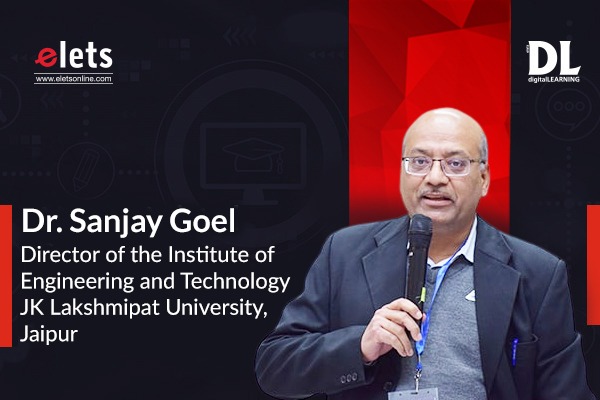
Governments and the private sector are investing heavily in building new infrastructure, with the global construction market estimated to grow from $7.3 trillion in 2021 to $14.4 trillion in 2030. The construction industry is constantly evolving with new technologies and materials. According to Google Scholar, more than 3.3 lakh research papers, reports, and patents published in the last five years include the word “civil engineering.” Despite the growth in the industry, common risks such as poor productivity, cost overruns, delays, quality issues, health and safety hazards, lack of coordination, change orders, environmental damage, weather-related issues, legal disputes, etc., can impede infrastructure development. Modern technologies in civil engineering and computing can together accelerate construction activities to meet growing infrastructure demands. With 75% of the infrastructure needed for 2050 not yet built, these technologies are playing a crucial role in infrastructure development.
Computing Technologies in Civil Engineering
The first International Conference on Civil and Structural Engineering Computing, Civil-Comp, was held in London in 1983. Since 1986, Wiley has been regularly publishing a scholarly journal, Computer-Aided Civil, and Infrastructure Engineering. The first issue published papers on remote video sensing of highways, creativity support systems for planning, design, and decision support, CAD, knowledge-based systems, FEM analysis, etc. Computing continues to support all subfields of civil engineering – construction, structural, transportation, geotechnical, environmental, and hydraulic engineering. It is used for research, designing structures like bridges, dams, docks, roads, airports, railways, canals, pipelines, waste disposal and flood control systems, and large buildings; determining construction methods and materials, establishing control systems, directing maintenance and repair, analysing soil and rock behaviour and designing structural foundations, analysing stability, analysing a wide range of data, etc.
Despite many exciting developments, the construction industry is still one of the least digitised industries. However, because of rapid infrastructure expansion and pressures of productivity, efficiency, quality, safety, and sustainability, the use of computing technologies in civil engineering is now increasing more rapidly as shown by the exponential increase in related journal publications and the expected quadrupling of the market sizes for construction management software and IoT in construction by 2030.
AI in Civil Engineering
Combined with other computing technologies, Artificial Intelligence (AI) has also been widely used in civil engineering to explore alternative ways to solve complex and ill-defined problems. Google Scholar shows more than 1.4 lakh search results for research papers, reports, and patents, published since the 1960s, in this area. The market size of AI in construction is projected to grow eightfold by 2030. In the early years, several rule-based expert systems were developed to support a variety of civil engineering tasks, e.g., estimating floods, designing buildings, bridge superstructures, diagnosis of building defects and dam seepages, geotechnical analysis, generating traffic control plans, deciding emergency responses in chemical spills, evaluation of hazardous waste sites, etc. In the 1986 conference on Expert Systems in Civil Engineering, USA, papers were presented on construction schedule analysis, decision-making and risk analysis, seismic risk analysis systems, inactive hazardous waste site characterization, site selection, etc. However, knowledge acquisition was the biggest challenge in developing such expert systems.
AI has been used for optimisation, project planning, structural health monitoring for preventive maintenance, quality control, safety, and disaster recovery. The use of robotics in the construction industry has risen with 3D printing, exoskeletons, and UAVs. The integration of IoT with AI has brought many advancements to the construction industry like using AI for energy-saving on demand and intelligent building energy monitoring, IoT-enabled BIM for real-time visibility and traceability in prefabricated construction, and implementing early warning and alarm systems in underground construction sites. AI combined with BIM is used to optimise the design for offsite construction, materials selection, reuse and recovery, waste-efficient procurement, deconstruction, and flexibility. Secure, decentralised solutions offering increased transparency in the construction data exchange can be created by combining AI with blockchain.
Interdisciplinary education for preparing Infrastructure AI Engineers
The challenges of the era of Circular and NetZero economies and Industry 4.0 require interdisciplinary solutions to engineering problems. The growth of software engineering automation platforms like GitHub Copilot and APIs for large-scale deep learning models like GPT and LaMDA are making domain expertise and systems engineering approaches even more crucial for developing AI systems in specific industries. An Infrastructure AI Engineer will combine knowledge of civil engineering and AI to develop AI systems to support the planning, design, construction, operation, and maintenance of infrastructure systems. Both civil engineering and computer science and engineering programmes can prepare graduates to take on such roles. The civil engineering curriculum should accommodate infrastructure-related computing topics like CAD, CAE, FEM, GIS, BIM, etc., as well as a few generic computing and AI courses. Most CSE programmes already include courses on AI and many universities are also offering B.Tech. programs in AI, though with a very minor difference only in the curriculum. Modern curriculum for CSE or AI programmes must also include a few courses in physical engineering disciplines and also some experience in related computing, e.g., CAD, CAE, GIS, BIM, etc. M. Tech in AI after B.Tech. in civil engineering is also an alternate approach.
As envisioned in the NEP, modern engineering education should provide students a balanced experience in their main discipline, other engineering disciplines, modern computing and engineering technologies, and also non-engineering disciplines. However, as John Good lad said, “Pedagogy, not curriculum, is the key to educational reform,” it is even more important to create active-learning oriented integrated interdisciplinary educational experiences by breaking down the silos between the physical engineering and computing and promote some collaborative interdisciplinary teaching experiences involving faculty from multiple departments.
Views expressed by Dr. Sanjay Goel, Director of the Institute of Engineering and Technology, JK Lakshmipat University, Jaipur






















